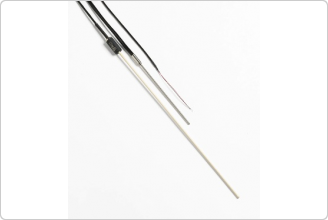Typically rtds contain either platinum.
Sprt temperature sensor.
With a variety of sensors available you re able to meet a range of industrial application requirements.
We offer many calibration options including callendar van dusen constants for transmitter sensor matching to provide the highest level of accuracy.
The world clock 5 alarms and stopwatch function help you keep track of time on the go.
This digital sport watch features twin sensor capabilities that monitor temperature altitude and air pressure to enhance your outdoor activities.
Choosing the right standard platinum resistance thermometer sprt as your primary standard may be the most critical purchase decision in your lab.
Casio men s twin sensor multifunction digital sport watch.
Our sprts have all the features you would expect in a world class design gold plated spade lugs a strain.
An rtd temperature sensor is a common device for temperature measurements in a wide range of industrial applications.
Resistance temperature relationship of metals.
In this article we take a look at how they work the most common types and their advantages and disadvantages.
This category includes high accuracy precision prt sprt and thermistor sensors for temperature calibration.
They re made from very pure α 3 926 x 10 3 c 1 platinum and the wire support is designed to keep the wire as strain free as possible.
Fluke calibration has one of only a few active sprt design groups in the world today.
The relative change in resistance temperature coefficient.
These sensors are for use with high accuracy temperature readouts that allow the programming of the its 90 coefficients for the best achievable temperature calibration accuracy.
5626 5628 secondary sprt prt temperature sensors highlights high temperature secondary standards range to 661 c meets all its 90 requirements for resistance ratios rtp drift 20 mk after 500 hours at 661 c calibrated accuracy of 0 006 c at 0 c.
The acronym rtd stands for resistance temperature detector.
200 c to 670 c model 670 standard platinum resistance thermometer construction permits the four internal platinum lead wires to expand and contract in the same manner as those of silver point thermometers.
Common rtd sensing elements constructed of platinum copper or nickel have a repeatable resistance versus temperature relationship r vs t and operating temperature range the r vs t relationship is defined as the amount of resistance change of the sensor per degree of temperature change.
The more accurate standard platinum resistance thermometer sprt sensors are instruments for realizing the its 90 temperature scale between the fixed points.

